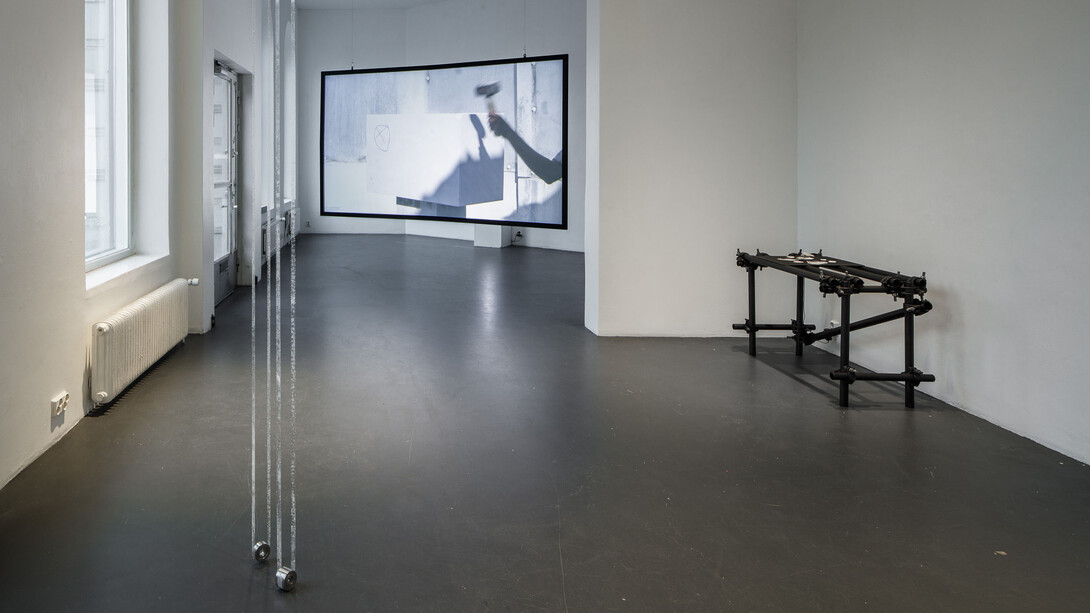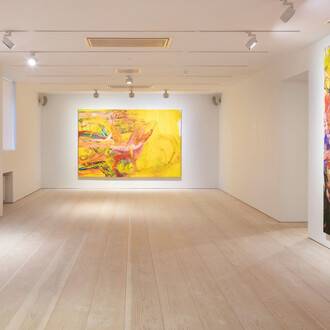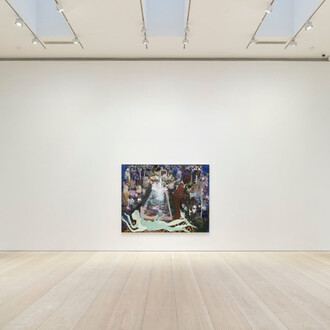Marble is often thought of as eternal. It is the chosen body of temples and monuments, of mythical figures and heroes, a noble material symbolising permanence. Yet marble is a mineral being that weakens under irregular pressure, loosens in certain weather, and slowly crumbles over time. Cooked marble explores this fragile and continuous metamorphic condition and how stone carries within it the pulse of impermanence.
In dialogue with scientists, quarry workers, art conservators, and even an iconoclast, Mireia c. Saladrigues follows marble through its states of tension and transformation. She traces the silent ageing of calcite crystals, the unravelling of their bonds, their pulverisation and dispersion. Beneath these chemical shifts runs a more human current of care and neglect, reverence and rupture. It is the complex, often contradictory ways we engage with artworks, and the lives they continue to lead long after their making.
At the core of the exhibition is Crederrei, se fussi di sasso (“I would believe, were you of stone”), a research-based project that returns to a single, irrevocable moment: the hammer strike against Michelangelo’s David on 14 September 1991. That instant – when marble met iron – set into motion a vast ecosystem of responses.
What does such an act of iconoclasm tell us about our relationship with art? What happens when an idol is fractured, when belief, devotion, and protection turn against their own object of worship? As Franca Falletti, then deputy director of the Galleria dell’Accademia, once said: “When you create an idol, you not only give rise to idolatry, but also, inevitably, to the danger of iconoclasm.”
If there is something luminous in that hammer blow, it lies in the knowledge it released: in the scientific research it set free, the information carried within its fragments, and the invisible particles of marble that briefly shimmered in the air of Galleria dell’Accademia.
Through video and sculptural translations, Saladrigues lets the fracture speak and the dust bear witness. The blow becomes not an ending, but a vibration; an opening through which the artwork reveals itself as unstable, emanating its own agency. In Impermanence, this exploration extends into the deep time of geology, observing marble through microscopic lenses and conversations with those who work the stone, following its passage from extraction to pulverisation, from the mountain’s core to the dust that settles on museum floors.
Together, these works draw marble away from the illusion of eternity and into the trembling field of becoming. They ask us to consider that every sculpture, however revered, is in slow dialogue with entropy; that every polished surface conceals tension, every monument carries its own disintegration.
Cooked Marble listens to the stone’s inner rhythm of perpetual shift. It reminds us that matter itself has memory, and that even what seems most solid bears within it the soft persistence of change.
(Special thanks to Nina Liebenberg, Ville MJ Hyvönen, and other dear colleagues for their invaluable collaboration in realising this exhibition)














